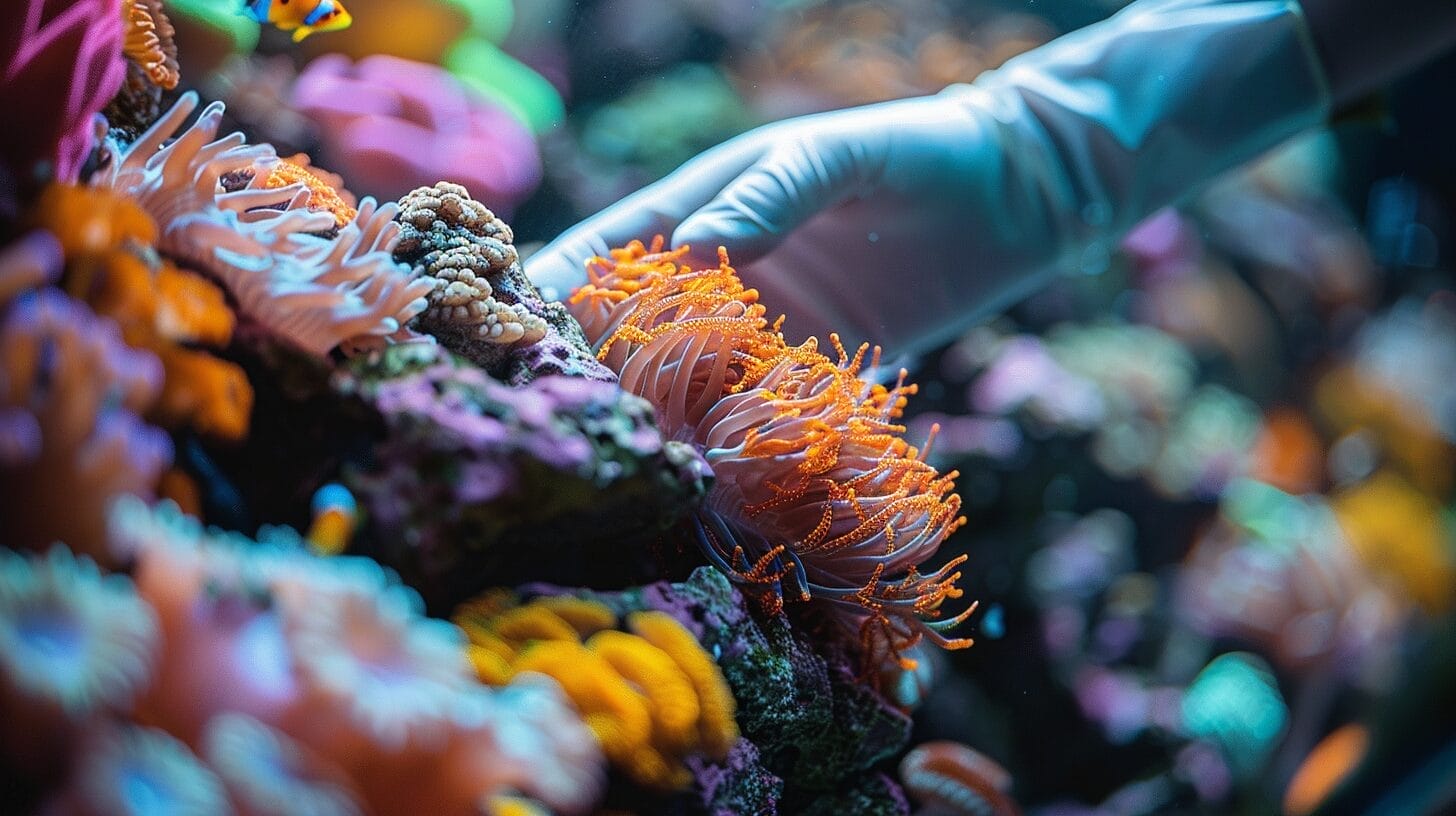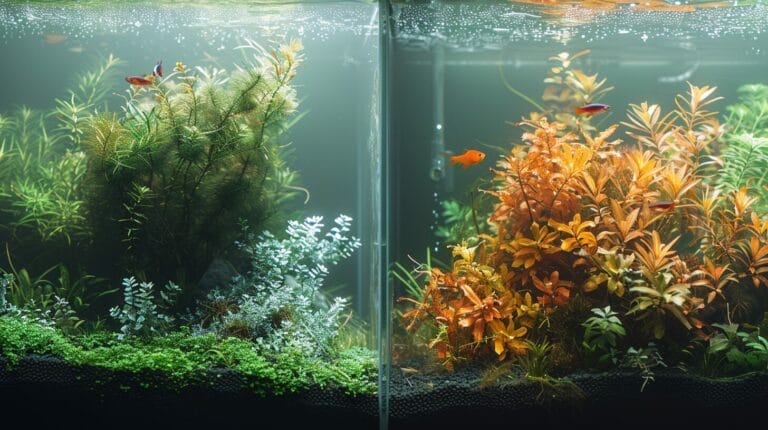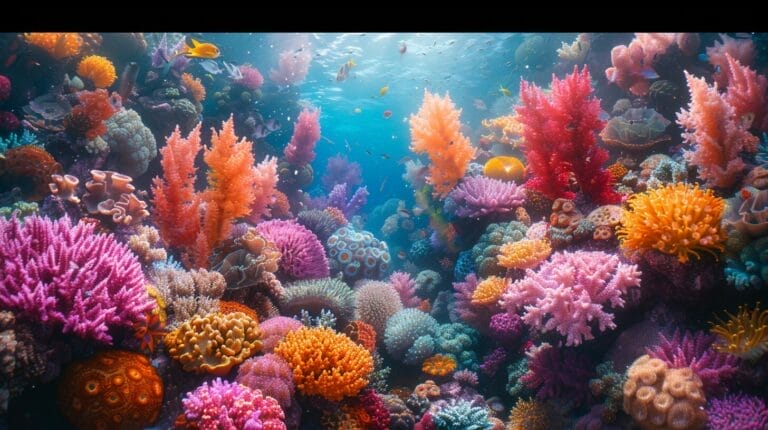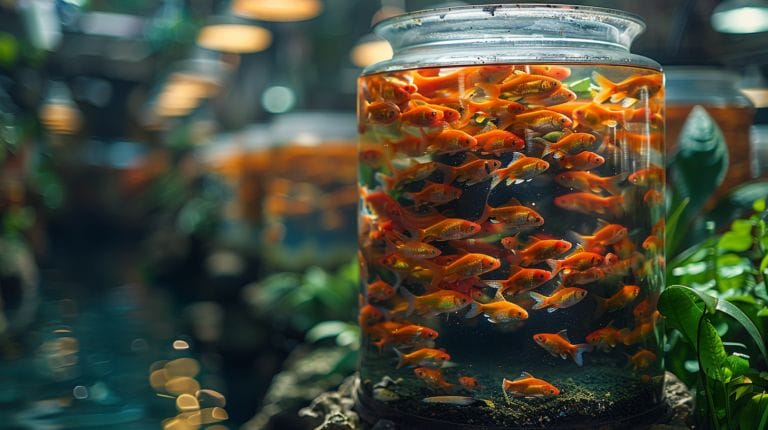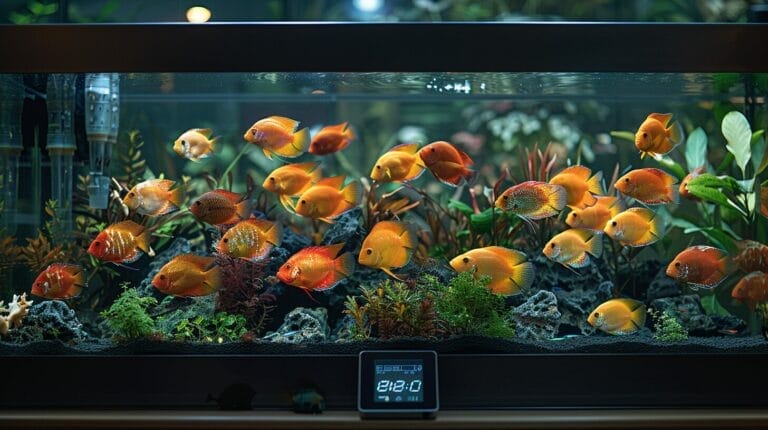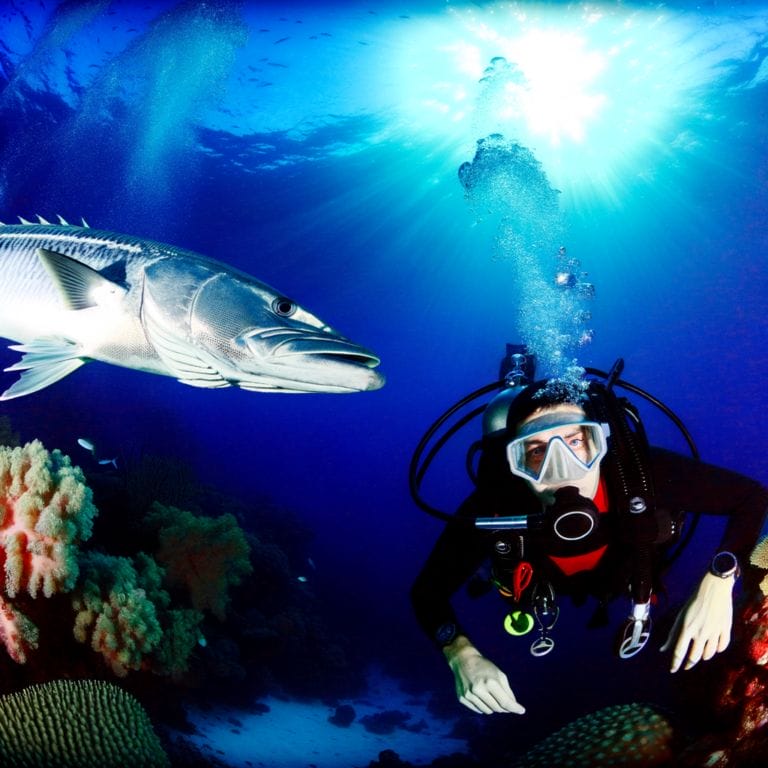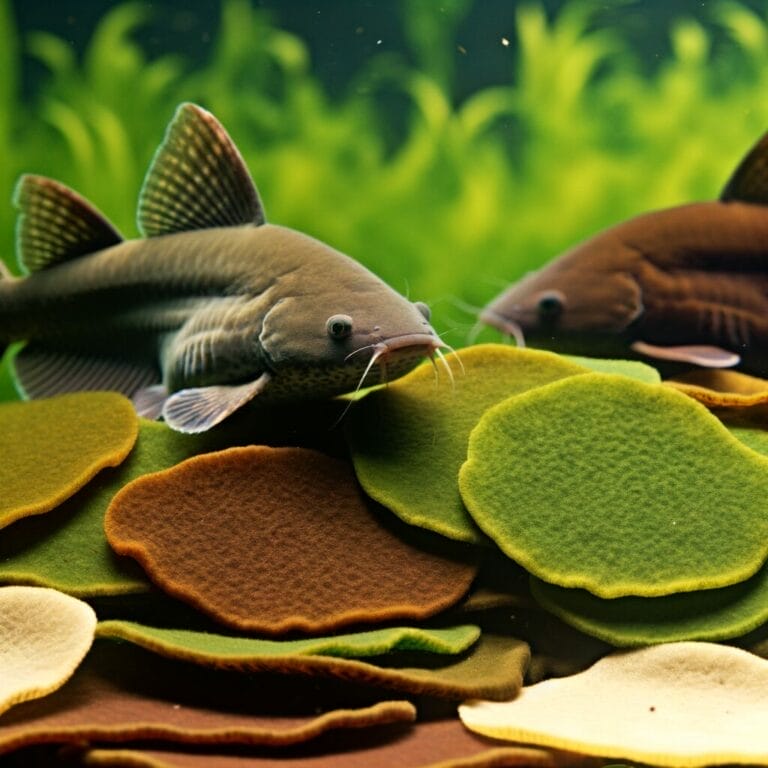Cleaning Saltwater Fish Tank: A Guide for Beginners
Maintaining a saltwater fish tank involves more than just feeding your aquatic friends. Cleaning saltwater fish tank is crucial for the health of your marine ecosystem. As beginners, it’s easy to underestimate the importance of proper tank maintenance. However, with the right guidance, the process can be both manageable and rewarding.
Key Takeaways
- Regular maintenance prevents harmful substances buildup.
- Efficient filtration system crucial for marine life health and for preventing phosphate buildup.
- Water changes balance parameters for a healthy environment.
- Diligent cleaning promotes thriving ecosystem.
Understanding the Basics of Saltwater Fish Tank Maintenance
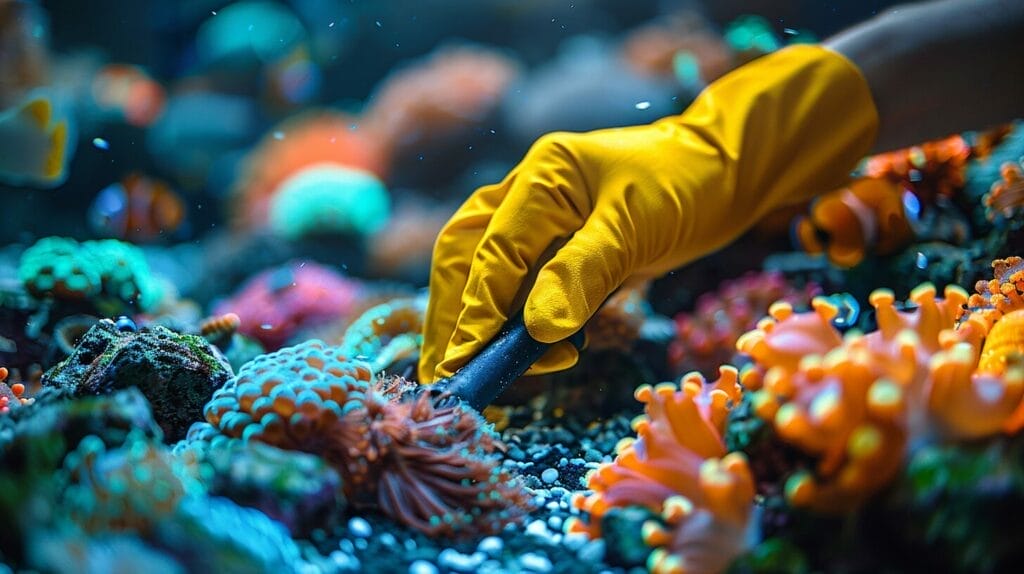
Understanding the basics of maintaining a saltwater fish tank, including testing for phosphate levels, is crucial for the health and well-being of your aquatic pets. One key aspect of tank maintenance is filtration. A high-quality filtration system helps keep the water clean by removing debris and waste. This is essential for keeping nitrate levels low, as high nitrate levels can be harmful to marine life.
Creating a regular maintenance schedule for your saltwater tank care, including checking pump operation and cleaning filter systems, is another crucial component. Consistent water changes, filter cleanings, and nitrate level testing are all essential tasks to keep your marine life healthy. By sticking to a routine, you can prevent the buildup of harmful substances in the water and ensure a stable environment for your fish and corals.
Innovative tools and technology can aid in maintaining your saltwater tank. Automated systems that monitor water parameters and make adjustments accordingly can be valuable assets in keeping your reef tank in optimal condition.
Prepping for Your Aquarium Clean: Gathering Necessary Equipment
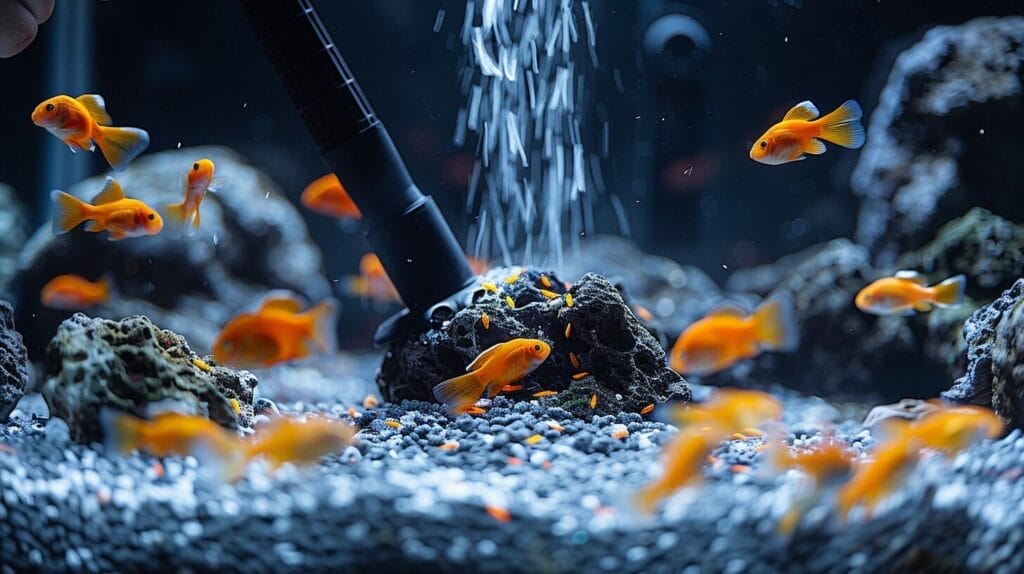
To prepare for cleaning your saltwater aquarium, gather the essential tools required for the task. Here is a table outlining the necessary equipment for cleaning your saltwater fish tank:
| Equipment | Purpose |
|---|---|
| Algae scraper | Removes algae from tank walls |
| Gravel vacuum | Cleans substrate and removes debris |
| Water siphon | Assists in water changes |
| Bucket | Used for holding and disposing of water |
| Microfiber cloth | Wipes down tank surfaces |
| Filter media | Replaces old media for filtration |
By having the necessary tools at your disposal, you can streamline the cleaning process and keep your saltwater fish tank in optimal condition.
The Art of Water Change in Maintaining a Saltwater Fish Tank

Regular water changes play a vital role in maintaining a healthy saltwater fish tank ecosystem. Here are some key points to consider when performing water changes:
- Frequency is Key: Regular water changes help remove accumulated debris and waste.
- Balancing Act: Water changes help maintain proper water parameters by diluting harmful substances, such as phosphate, and replenishing essential minerals.
- Beneficial Bacteria: Nitrifying bacteria thrive in a well-maintained aquarium with regular water changes, aiding in the breakdown of harmful ammonia and nitrites, which is vital for fish in the tank.
- Stress Reduction: Consistent water changes reduce stress on fish, promoting their overall well-being and boosting their immune systems.
Cleaning Procedures for a Healthier Saltwater Aquarium
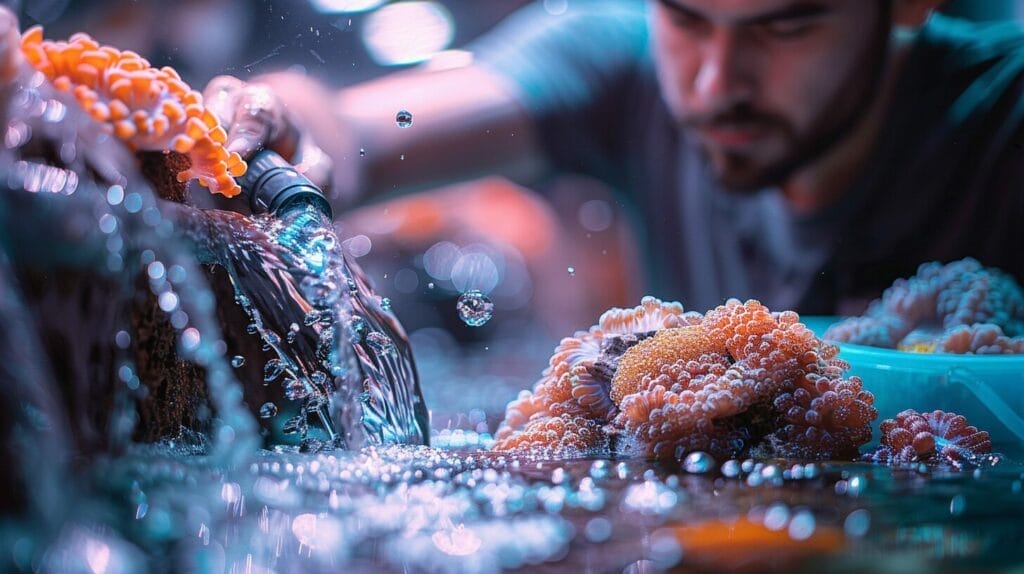
When cleaning the tank walls, use a magnetic algae scraper to gently remove algae buildup without disturbing your saltwater fish. Substrate cleaning is crucial to prevent the accumulation of debris and waste.
Regular maintenance tasks for filters and other aquarium equipment, such as checking for clogs and ensuring proper functioning, are vital for a healthier saltwater environment. Remember, a clean aquarium is a happy aquarium!
Post-Cleaning Care and Maintenance for Saltwater Fish Tanks
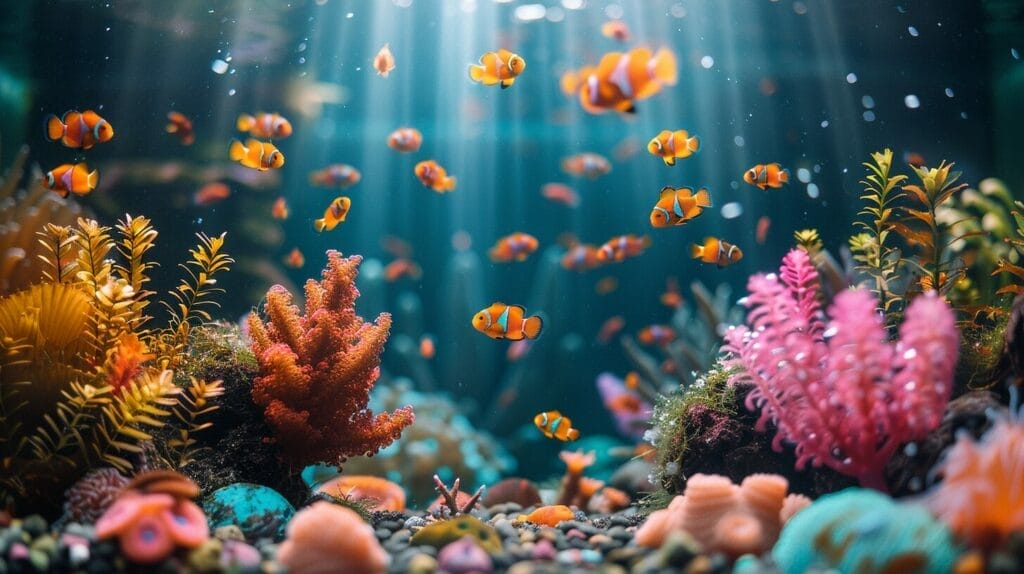
- Reintroduce Fish: Ensure the water temperature and salinity match the main tank to prevent shock and stress on the fish in the tank.
- Monitor Tank Conditions: Keep a close eye on water parameters such as pH, ammonia, nitrite, and nitrate levels post-cleaning.
- Scheduled Regular Maintenance: Establish a routine maintenance schedule for tasks like water changes, filter cleanings, and equipment checks.
- Observe Fish Behavior: Pay attention to your fish’s behavior after cleaning. Any signs of stress, aggression, or illness should be addressed promptly.
Conclusion
Overall, cleaning a saltwater fish tank doesn’t have to be daunting for beginners. By understanding the basics, prepping with the right equipment, mastering water changes, and following proper cleaning procedures, maintaining a healthy aquarium can be manageable.
Remember to regularly clean, monitor water parameters, and provide post-cleaning care to ensure the well-being of your fish and the overall health of your saltwater aquarium.
Happy fishkeeping!
Frequently Asked Questions
What is a saltwater tank?
A saltwater tank is an aquarium that is designed to simulate the natural habitat of marine organisms by maintaining a saltwater environment.
How often should I change the water in my saltwater fish tank?
It is recommended to change the water in your saltwater fish tank, considering the gallon volume, every two weeks to maintain water quality and prevent the buildup of harmful substances.
What are some maintenance tasks involved in keeping a saltwater tank?
Maintenance tasks for a saltwater tank may include cleaning the tank, checking water parameters, changing the water, monitoring the health of the fish and corals, and removing any pests or algae.
What are some common pests and algae that can affect a saltwater tank?
Common pests and algae that can affect a saltwater tank include amphipods, bristle worms, hair algae, cyanobacteria, and bubble algae; employing tank cleaners can help manage these issues.
How can I improve water quality in my saltwater fish tank?
You can improve water quality in your saltwater fish tank by using a quality filtration system, monitoring nutrient levels, reducing waste buildup, and performing regular water changes.

